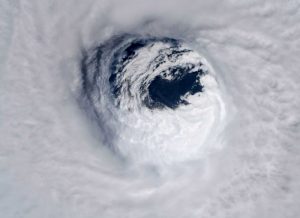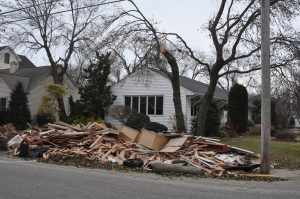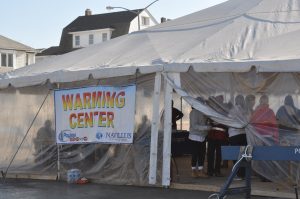KN, p. 278 “Hurricane Season Opened June 1st”

Hurricanes do BILLIONS of dollars in property and business damage every year. Wind and rain slam the coastal regions of the planet with a ferocity that man-made structures can’t survive.
A hurricane is a tropical storm with winds above 74 miles per hour. Called typhoons and cyclones in other regions of the world, there’s no doubt that the challenge of living through ‘the big one’ should scare us all into taking precautions. And with good reason.
Even at level 1, the least powerful of hurricane categories, winds of up to 95mph can knock people off their feet, disintegrate roofs, and send debris flying through the air. Remember Katrina and the personal and economic devastation it inflicted in 2005? That was an over two hundred mile wide, level 5 storm, with shrieking winds up to 175mph, the most costly hurricane the U.S. has experienced. And it’s not even the largest hurricane on record. Windows blown out, buildings collapsed, vast low-lying areas underwater for weeks, many uninhabitable neighborhoods in the aftermath – that is the norm for such an enormous weather event.
Government agencies can help with re-establishing communications, getting water and clothing to the victims, and assisting with rescue efforts, but this can take weeks if roads are impassable or if manpower is limited. Enter volunteer groups – essential to any recovery and rebuilding process. Unfortunately, it can take months – sometimes years – before decent housing can be built for everyone who needs it. Even if homeowners can foot the bills for repairs, a shortage of skilled construction people and supply chain issues with construction materials themselves, puts a huge hold on any recovery efforts.
A friend of ours lived on other people’s couches for three years after Superstorm Sandy while battling insurance companies and waiting for builders to arrive.

The debris at the curb is a partial pile of former studs, cabinets, and flooring removed from inside the shell that remained standing. A six foot wall of sea water had surged down the street from the beach 1/4 mile away and poured through every access point in every house in its path.
The boardwalk that had been on that beach? Torn up by the force of the wind and water thrashing it, sand dunes fill the place where boards used to be.
More than one storm has left thousands of people homeless. Masses of people trudge toward refugee tent cities, in search of a safe place to sleep and eat. Power is gone after the big storms. Forget about food and fresh water. Superstorm Sandy occurred in late October when the temperature drops to forty degrees at night in the northeastern USA. There was no heat/power for weeks in some neighborhoods while power companies tried to get the grid back online. Many people had to rely on the kindness of complete strangers for bare necessities.
For the vacation destinations that depend almost exclusively on tourist dollars to support existing roads and housing, and count on food crops to feed the residents, storms can create a level of chaos and devastation that is difficult to come back from. After two major hurricanes within three years, an acquaintance abandoned his house in the Caribbean and left, never to return. Government officials told him the infrastructure in his section would take years to restore.
How can you prepare for hurricanes?
Hurricanes are not just a coastal problem. Pouring rain, high winds, and tornadoes occur hundreds of miles inland from where a hurricane or tropical storm makes landfall. My Carolina cousin’s house is over 200 miles from the coast, but during Michael lost the roof and more. Plus, all the grass and topsoil surrounding the house washed away in the torrents of water flooding the streets. Gardens, trees, shrubs, flowers? Mostly gone, as also happened to farmers providing food for the area. Michael was a mere Class 2 hurricane when it reached that section of the State.
Make a Plan
Make sure everyone in your household knows and understands your hurricane plan, including work, child care, pets, food, water, evacuation, and changes to the daily routine.
Are you in an Evacuation Zone?
You may have to evacuate quickly if you live in an evacuation zone. Learn your evacuation routes and practice with your family and pets well before an actual storm hits. Investigate where you will stay if you can’t return home for a week or more. Follow the instructions from local emergency managers. They don’t make recommendations lightly.
Review Important Documents
Make sure your insurance policies and personal documents (such as ID) are current. Put copies in a safe deposit box at the bank or other secure location. A friend who lost everything in a fire had no backup documents. It took over six months to prove she was who she said she was in order to file claims, because there were thousands in the same situation and the system was overloaded.
Get your home ready
Clean the gutters, stow the outside furniture, hang hurricane shutters if you have them, or board up the windows.
Get your tech ready
Keep your cell phone charged when you know a hurricane is on its way. Consider buying backup charging devices for your electronics – you may need to use your laptop while the storm is passing, if wi-fi is working.
Help your neighbors
Help senior adults, or anyone else who may need assistance to get ready for the storm.
Supplies
Have enough supplies for your household, including food, water, medication, disinfectants, masks, pet supplies, etc. in your go bag or car trunk. After a hurricane, you may not have access to these supplies for days or even weeks.
Experience has shown that since we cannot change nature, the best plan is to get out of the way until storms move on or dissolve. If we evacuate before they hit, at least lives can be saved, if not property.
Whatever the type, natural disasters are overwhelming to the communities struck by them. Contact your church to see if it is doing a clothing/food/water collection and donate whatever you can. Ask if the church is sending a reconstruction team to one of the affected towns. Contact your local branch of Habitat for Humanity and ask what you can do to help as a part of their Disaster Relief Program.
For more information about preparedness in your region, check out your town’s website or call the city manager’s office to see if pamphlets or a what-to-do list are available. If that doesn’t exist, follow the local TV station’s coverage of approaching storms. If it’s a big one coming, there are usually shelters set up ahead of time and locations are mentioned on the air.
Stay safe and help keep the body count down. You can’t outrace these monster storms.
KN, p. 278 “Hurricane Season Opened June 1st” Read More »


